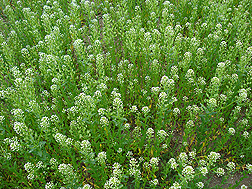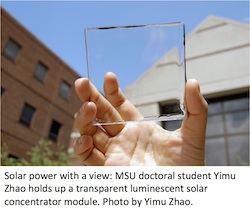 A company from Nevada thinks it has found a way to make a profit turning algae into renewable diesel: multi-tasking. This article from the New York Times says Algae Systems, which has a pilot plant in Alabama, believes it will be able to turn a profit by doing several other things while turning the algae oil into a usable fuel, namely, making clean water from municipal sewage, using the carbon-heavy residue as fertilizer and generating valuable credits for advanced biofuels.
A company from Nevada thinks it has found a way to make a profit turning algae into renewable diesel: multi-tasking. This article from the New York Times says Algae Systems, which has a pilot plant in Alabama, believes it will be able to turn a profit by doing several other things while turning the algae oil into a usable fuel, namely, making clean water from municipal sewage, using the carbon-heavy residue as fertilizer and generating valuable credits for advanced biofuels.
“We think it is a really elegant solution,” said Matt Atwood, the chief executive. At its heart is a “hydrothermal liquefaction” system that heats the algae and other solids in the sewage to more than 550 degrees Fahrenheit, at 3,000 pounds per square inch, turning out a liquid that resembles crude oil from a well.
The company sent the liquid to Auburn University, where scientists added hydrogen (a common step in oil refining) to produce diesel fuel. An independent laboratory, Intertek, confirmed that the diesel fuel met industry specifications. The thermal processing has caught the attention of independent scientists. The Department of Energy recently awarded a $4 million grant to a partnership led by SRI International for further work on Algae Systems’ hydrothermal processing system.
Engineers hope the system could dispose of a variety of unwanted or hazardous materials. It also destroys pathogens in sewage.
Developers of the high-temperature processing technology say this method is much less energy intensive than more commonly used practices that dried out the algae and broke down the cell walls to separate the oil from the microbes.










